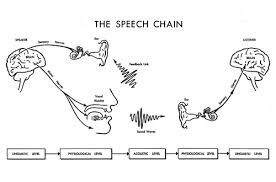Apraxia of Speech – Study Guide Forum
Introduction
- Apraxia of speech, also called verbal apraxia, is a speech sound disorder. It has been recognized as a neurologic disorder affecting the brain pathways involved in planning movement sequences for speech production.
- It is common in children but may also occur in other age groups.
- A predominant finding in this disorder is the inability of a child to produce syllables and sounds precisely.
Signs and Symptoms
Hire our assignment writing services in case your assignment is devastating you. We offer assignment help with high professionalism.
- Inconsistency in making consonant errors in repeatedly produced words or syllables
- Prolonged and disrupted co-articulatory transitions between syllables and sounds
- Inappropriate prosody. This is particularly true in the realization of lexical or phrasal stress.
- Making fewer vocal cords or babbling less than the typical developmental milestone suggests
- Using a hard-to-understand speech
- Leaving sounds when speaking (American Psychiatric Association, 2022).
Differential Diagnoses
- Autism spectrum disorder. Rationale?
- Functional speech impairments. Rationale?
- Cognitive delay. Rationale?
- Central auditory processing disorders. Rationale?
Note:
- These conditions share one or more manifestations with apraxia of speech disorders.
- A comprehensive assessment of the patient, along with a complete diagnostic workup, can help in excluding some differentials and in coming up with a diagnosis.
Incidence
- Apraxia of speech is more common in children and adults. Why?
- Childhood apraxia of speech occurs in 1 to 2 children per 1000.
- In adulthood, it is always associated with other illnesses. Apraxia of speech is seen in: (Explain for each)
- Between 50-80% of adults who have recently developed stroke
- 19-45% of those who have developed traumatic brain injury
- 90% of patients with dementia
- 25% of patients with multiple sclerosis (Shriberg et al., 2019)
Development and Course
- Apraxia of speech is a neurological disorder affecting the brain pathways.
- This disease can be congenital or acquired. Acquired disorder often presents in association with:
- A known neurological condition. Examples.
- Secondary to injury or a pathological change. Explain.
- As a primary sign in a complex neurobehavioral disorder. Examples.
Note:
- The underlying pathophysiological principle underlying this disorder is the dysfunction of the cerebral hemisphere of the brain, particularly the parietal lobe. In this condition, neurons in the parietal cortex tend to fire selectively upon recognizing an input (Josephs et al., 2021). This results in the brain’s inability to direct movements needed for speech.
Prognosis
- Apraxia of speech has a poor prognosis.
- This condition has no cure, and children who develop this condition are unlikely to outgrow it. These children may not learn sounds in the typical sequence, and the condition will not progress with or without treatment.
Considerations Related To Culture, Gender, and Age
- Cultural considerations related to apraxia of speech are those bordered on poor understanding and differences in the definition of the disease. In some cultures, this condition is likened to a generational curse, and children with this condition are seen as outcasts. Another consideration is for cross-cultural or multi-lingual individuals. In these groups, speech production may be influenced across all languages, although errors may be manifested differently.
- Gender differences in this condition may also be apparent. Female tends to have an advantage over males in early language development. Notwithstanding, the predilection to develop this condition is similar in both genders.
- Age consideration also exists. As individuals age, they become more susceptible to conditions that predispose individuals to apraxia of speech, such as stroke.
Pharmacological Treatments and Side Effects
- Apraxia of speech has no recognizable and effective pharmacological options. However, in secondary disease, pharmacotherapeutic choices may be valuable in managing the underlying causal factors for the disease (Gomez et al., 2022). How?
Nonpharmacological Treatments
- The available nonpharmacological treatment option focuses on movement and sound patterns. These include: (Explain for each)
- Sensory cueing approaches such as:
- Visual and verbal cueing
- Tactical facilitation (Gomez et al., 2022)
Diagnostics and Labs
- No diagnostics and labwork are confirmatory of the disorder. Diagnosis of the disease depends solely on dynamic assessments to rule out differentials and make a diagnosis. (Explain)
Comorbidities
- This can be apparent in acquired disease and primary disease. The common comorbidities in primary disease include:
- Co-morbid intellectual disability
- Nonspeech apraxia
- Receptive language impairment
- Stroke and dementia: Common findings in patients with acquired apraxia of speech (Josephs et al., 2021).
Legal and Ethical Considerations
- Legal and ethical standards have usually underscored the significance of language and communication in various legal processes.
- The inability to comprehend and engage in legal language is something that has sometimes elicited some debates centered around legal representations. This may create legal problems for the involved patients. Elaborate on specific legal considerations, including available policies on the same.
- Ethical considerations are often centered on management. Beyond the codes, management of apraxia of speech, along with other speech pathologies, requires specific consideration of the patient’s identity (Code, 2021). This should always guide the choice of therapy. Elaborate, adding on other ethical considerations.
Pertinent Patient Education Considerations
- When providing care to parents with children with the disorder, it is important to highlight that this condition has no cure. In this respect, including the necessary support is paramount to help the parents process the information and cope with their child’s condition. (Address key educational points.)
References
Allison, K. M., Cordella, C., Iuzzini-Seigel, J., & Green, J. R. (2020). Differential diagnosis of apraxia of speech in children and adults: A scoping review. Journal of Speech, Language, and Hearing Research, 63(9), 2952–2994. https://doi.org/10.1044/2020_jslhr-20-00061
American Psychiatric Association. (2022). Diagnostic and Statistical Manual of Mental Disorders, Fifth Edition Text Revision.
Code, C. (2021). Contemporary issues in apraxia of speech. Aphasiology, 35(4), 391–396. https://doi.org/10.1080/02687038.2021.1896108
Gomez, M., McCabe, P., & Purcell, A. (2022). A survey of the clinical management of childhood apraxia of speech in the United States and Canada. Journal of Communication Disorders, 96, 106193. https://doi.org/10.1016/j.jcomdis.2022.106193
Josephs, K. A., Duffy, J. R., Clark, H. M., Utianski, R. L., Strand, E. A., Machulda, M. M., Botha, H., Martin, P. R., Pham, N. T., Stierwalt, J., Ali, F., Buciuc, M., Baker, M., Fernandez De Castro, C. H., Spychalla, A. J., Schwarz, C. G., Reid, R. I., Senjem, M. L., Jack, C. R., … Whitwell, J. L. (2021). A molecular pathology, neurobiology, biochemical, genetic, and neuroimaging study of progressive apraxia of speech. Nature Communications, 12(1). https://doi.org/10.1038/s41467-021-23687-8
Shriberg, L. D., Strand, E. A., Jakielski, K. J., & Mabie, H. L. (2019). Estimates of the prevalence of speech and motor speech disorders in persons with complex neurodevelopmental disorders. Clinical Linguistics & Phonetics, 33(8), 707–736. https://doi.org/10.1080/02699206.2019.1595732
ORDER A PLAGIARISM-FREE PAPER HERE
We’ll write everything from scratch
Question
Abnormal brain development or damage at an early age can lead to neurodevelopmental disorders. Within this group of disorders, some are resolvable with appropriate and timely interventions, either pharmacological or nonpharmacological, while other disorders are chronic and need to be managed throughout the lifespan.

Apraxia of Speech – Study Guide Forum
For this Assignment, you will develop a study guide for an assigned disorder and share it with your colleagues. In sum, these study guides will be a powerful tool in preparing for your certification exam.
Your Instructor will assign you to a specific neurodevelopmental disorder from the DSM-5-TR.
(Apraxia of Speech)
Research your assigned disorder using the Walden Library. Then, develop an organizational scheme for the important information about the disorder.
Create a study guide for your Apraxia of Speech disorder. Your study guide should be in the form of an outline with references, and you should incorporate visual elements such as concept maps, charts, diagrams, images, color coding, mnemonics, and/or flashcards. Be creative! It should not be in the format of an APA paper. Your guide should be informed by the DSM-5-TR but also supported by at least three other scholarly resources.
Areas of importance you should address, but are not limited to, are:
Signs and symptoms according to the DSM-5-TR
Differential diagnoses
Incidence
Development and course
Prognosis
Considerations related to culture, gender, age.
Pharmacological treatments, including any side effects.
Nonpharmacological treatments
Diagnostics and labs
Comorbidities
Legal and ethical considerations
Pertinent patient education considerations




